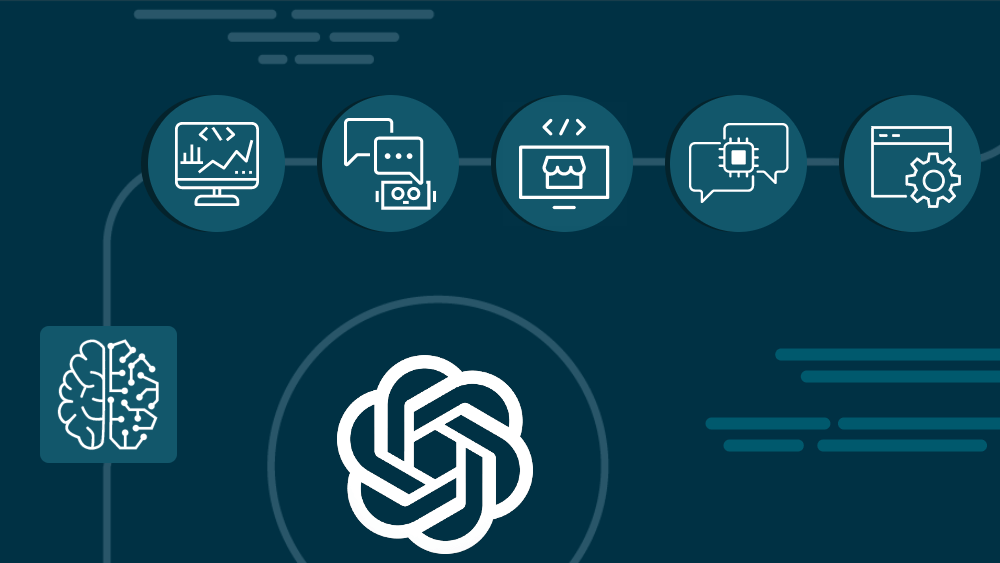
Integrating ChatGPT into Your Current System: A Step-by-Step Guide
Bhanu Joshi
Senior Software Engineer @HCLTech, Avaloq ACCP & ABR/S Certified, AI Enthusiast
Introduction:
Integrating artificial intelligence (AI) capabilities into existing systems has become increasingly popular, and one powerful AI tool for enhancing user interactions is ChatGPT.
In this article, we will explore a step-by-step guide to integrating ChatGPT into your current system, enabling you to leverage its capabilities and enhance the user experience.
By following these steps, you can define your integration goals, choose the appropriate integration method, prepare your data, implement model interaction, integrate the user interface, test and iterate, and finally deploy and monitor the integrated ChatGPT chatbot.
1. Define Integration Goals:
Before diving into the integration process, it is essential to clearly define your integration goals. Identify how ChatGPT will enhance your current system and determine the specific use cases and functionalities you want to achieve. Whether it's providing customer support, answering frequently asked questions, or assisting with information retrieval, a clear understanding of your integration goals will guide the subsequent steps.
2. Choose Integration Method:
Once your goals are defined, choose the integration method that best suits your system architecture and requirements. OpenAI offers a few common approaches:
??a. API Integration:
??OpenAI provides an API that allows you to make requests to the ChatGPT model. By sending a text prompt to the API, you can receive a response, making it a straightforward and flexible integration option.
??b. SDK Integration:
??If OpenAI provides a software development kit (SDK) for the programming language used in your system, you can integrate the SDK into your codebase. This enables direct interaction with the ChatGPT model and provides more control over the integration process.
??c. Custom Model Deployment:
??For specific requirements and advanced technical knowledge, you can explore deploying the ChatGPT model in your infrastructure or cloud environment. This approach offers greater control and flexibility but requires more technical expertise.
3. Data Preparation:
To ensure seamless interactions with ChatGPT, prepare the data that will serve as input for the model. This may involve extracting relevant information from your system's databases or other sources. Properly format and structure the data to align with the chatbot interaction requirements. High-quality and well-prepared data will significantly improve the chatbot's performance and accuracy.
4. Model Interaction:
Implement the logic and code required to interact with the ChatGPT model. Depending on your chosen integration method, utilize the appropriate API calls or SDK functions to send user prompts or queries to the model and process the responses. This step establishes the communication channel between your system and ChatGPT, enabling dynamic and intelligent interactions.
5. User Interface Integration:
Design and integrate the user interface (UI) components necessary for the chatbot within your system. Create chat windows, input fields, and message rendering features to facilitate user interactions with ChatGPT. A seamless and intuitive UI will enhance the overall user experience, ensuring smooth communication between users and the chatbot.
6. Testing and Iteration:
Thoroughly test the integration to ensure the chatbot functions as expected. Validate its performance, accuracy, and responsiveness. Incorporate user feedback and iterate on the implementation to refine the chatbot's behavior and adapt it to evolving requirements. Continuous testing and iteration are crucial to creating an effective and reliable ChatGPT integration.
7. Deployment and Monitoring:
Once the integration passes testing and refinement, deploy the integrated ChatGPT chatbot into your production environment. Monitor its performance closely, gather user feedback, and continuously improve the system based on user interactions and evolving requirements. Regularly assess the chatbot's effectiveness, accuracy, and user satisfaction to provide a seamless and delightful user experience.
Conclusion:
Integrating ChatGPT into your current system has the potential to revolutionize user?interactions and elevate your system's capabilities.
By following the step-by-step guide outlined in this article, you can define integration goals, choose the appropriate integration method, prepare your data, implement model interaction, integrate the user interface, test and iterate, and finally deploy and monitor the integrated ChatGPT chatbot.
Embrace the power of AI and enhance your system with ChatGPT to provide a more engaging and intelligent user experience.
Cloud Develop at Teledyne aka FLIR Systems aka Aeryon Labs
5 个月Funny .. chatgpt pretty much spits this out when asked this question.